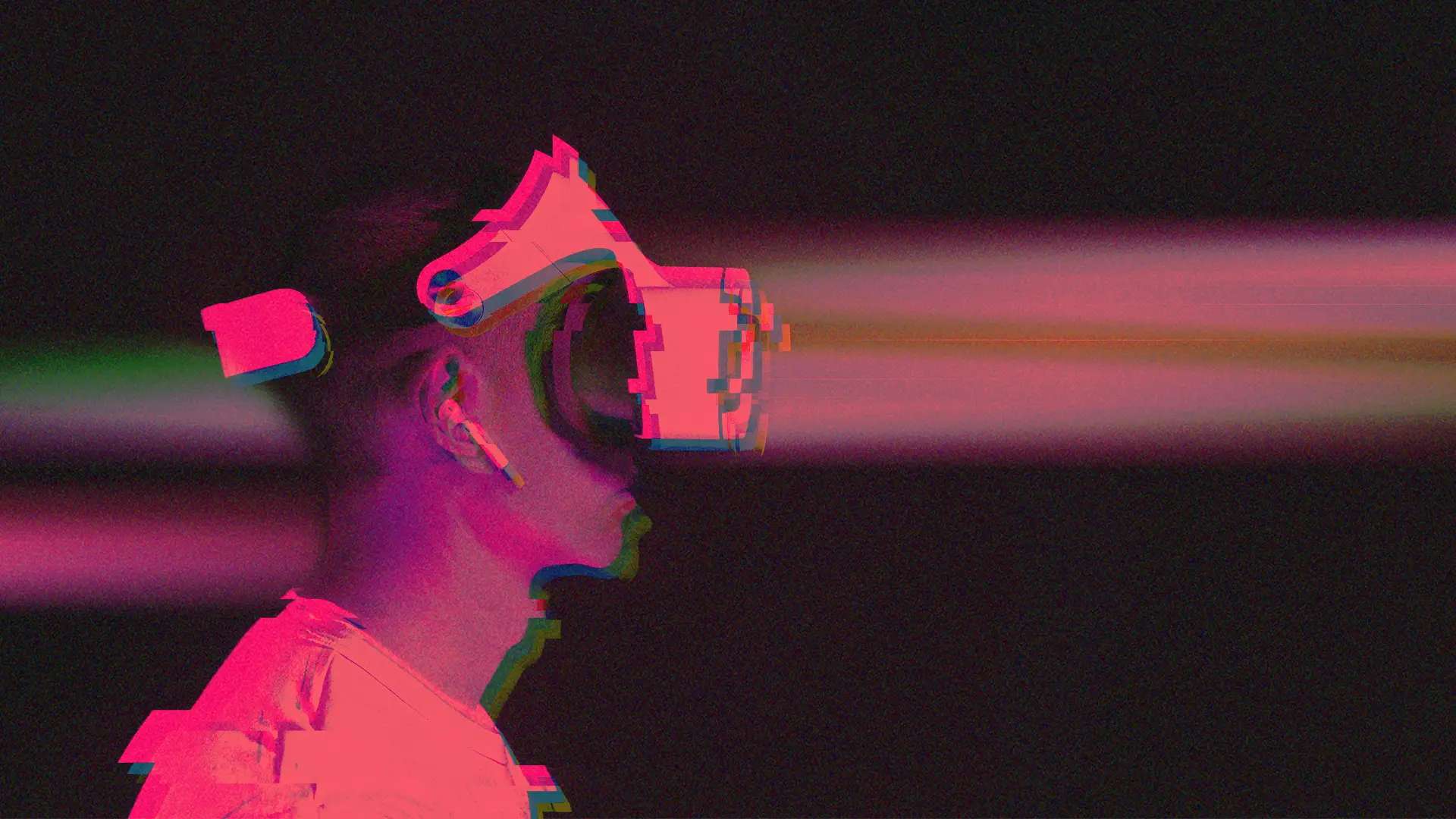Key Takeaways
- The latest immersive technology at events has the power to collect rich data on user behavior and preferences through device logs and real-time tracking.
- Streamlined data collection strategies, such as badge scanning, virtual queues, and post-experience interaction, enhance user experience while ensuring ethical data practices and transparency.
- Data Analysts and Scientists can transform data into actionable business intelligence, enabling predictive analytics, informed product design, and targeted marketing strategies.
Virtual reality (VR) and augmented reality (AR) have officially become mainstream. The AR / VR market worldwide is expected to reach 3.7 billion users by 2029. These immersive technologies have a notable benefit in conventions and events, where they help create more engagement through memorable experiences. Yet, the payoffs to companies are greater than in-the-moment participation. That’s because AR and VR are also powerful data collection tools.
This technology presents a unique opportunity for companies to gather rich, actionable data through user engagement. In fact, virtual and augmented reality data collection can lead to deeper insights into customer behavior, increased awareness of product preferences, and better predictions regarding future customer demand. The wealth of information created by these experiences requires skilled data professionals to translate the findings into actionable insights.
Capturing real-time user behavior with AR / VR data collection
Augmented and virtual reality technologies are transforming how companies understand user behavior by collecting valuable real-time insights. At the heart of this innovation are AR / VR devices, which make gathering behavioral and biometric data seamless and nonintrusive.
AR overlays digital information onto the physical world, often through familiar devices like smartphones. For instance, a company’s app might enable users to interact with virtual maps or pop-up information during meetings or networking events, enriching real-world experiences.
Meanwhile, VR provides fully immersive digital environments using headsets equipped with advanced tracking capabilities that enhance the user experience while simultaneously collecting data. For example, users engaging with a simulation or product training module in VR have their movements recorded through headset activity logs. This allows companies to understand how users perform tasks or interact within the virtual space.
VR devices also gather biometric data. By using features like motion sensors, eye tracking, and muscle tension analysis, these devices provide insights into how users physically respond to their environment. This paints a more complete picture of user engagement. Plus, data collection occurs without interrupting the experience, eliminating the need for users to complete long surveys or pause to provide feedback.
Why AR / VR data collection matters
The data collected allows businesses to uncover trends, predict future customer preferences, and refine their products or services. For example, if a VR experience involves exploring a new vehicle model, companies could track which trims, colors, or features attract the most attention, helping shape future product development. Similarly, virtual travel experiences could capture user interest in specific amenities, providing hospitality brands with actionable insights to enhance their packages.
This integration of AR / VR into data collection benefits both companies and users alike. Businesses gain the ability to deliver tailored, intuitive experiences to their audiences, while users enjoy engaging interactions that feel natural and uninterrupted. It’s a promising advancement that is reshaping industries like retail, automotive, and health care by building smarter and more personalized strategies. By understanding how users interact with their products, companies can create experiences that truly resonate and evolve with their audience's needs.
Practical strategies for data collection with AR / VR at events
No one likes waiting in line, and many people are hesitant to spend time filling out forms. Luckily, AR / VR technology and devices make it easier for companies to capture data with little effort from users.
- Badge scanning and image recognition. Simplify data collection before starting the immersive experience by using QR codes or image recognition for scanning badges.
- Virtual queues. Grab a name, phone number, and email for off-headset registration. Let users roam and receive a text when their immersive experience is ready. One idea is to set up a coffee bar and comfy furniture at or near your booth, encouraging users to remain on-site and engaged while they wait.
- VR device data logs. VR headsets can automatically track biometric data as well as customer behavior. Looking back at headset activity logs can reveal how users interact with the product or environment during the immersive experience.
- Post-experience interaction. After the headset is off and users are fresh from their experience, product liaisons can connect with them to learn about their experience, answer questions, and ask if they'll opt in to continued communication.
A streamlined, simple, and even method of data collection is key to avoid turning people away from the experience due to clunky or invasive data entry methods. Regardless of your method, transparency is key. Comply with ethical and legal standards, gain user consent, and be transparent about what information is collected and how it’s stored and used. Data professionals can also help design the user interface for these collection methods to ensure that the process is user friendly.
Turning AR / VR data into actionable business intelligence
Data analysis is essential for getting deeper insight into your customer base. With the right data, companies can tap into the power of predictive analytics and demand forecasting. These can drive more educated business decisions.
Data analytics from immersive experiences can also inform product design and development, as well as targeted marketing and sales strategies. At the very least, there's an opportunity to follow up after the event with email campaigns or more direct sales communications. Customer relationship management (CRM) systems are key here for helping manage and analyze collected data. From there, analytics software can help with data visualization and interpretation.
Data Scientists and Data Analysts are examples of skilled professional roles that are integral to post-event data handling. These individuals review data to uncover insights and solve potential customer problems. Data Scientists use raw data to find hidden patterns and trends, learn more about customers, and find solutions to optimize business operations and decision-making. Additionally, skilled professionals can make use of AI tools to analyze data more quickly, which can improve the speed and efficacy of turning data into insights.
Real-world applications of virtual reality data collection
As AR / VR technology becomes more accessible, users across many different industries are donning headsets. As a result, data collection opportunities abound in a variety of fields:
- Automotive: Tracking eye movements to understand which dashboard features users interact with most, predicting demand for specific digital interfaces, accessories, and styles.
- Construction: Showcasing large equipment and gathering user preferences for operational design and ergonomics.
- Travel: Exploring destination preferences and identifying pricing sensitivity by tracking which experiences users gravitate to and gauging reactions to special offers.
- Airlines: Showcasing new aircraft interiors to investors and high-end customers to gauge market opportunities.
The benefits of AR / VR data collection
Companies that host conferences or events have a significant opportunity to explore data collection using AR / VR technology. Engaging in immersive experiences is exciting for users, and the opportunity to learn from their behaviors and preferences is undeniable. With the right data professionals in place, companies can investigate the data to uncover trends, make more accurate predictions, and tap insights to drive better business decisions.
As AR / VR technology evolves, the demand for skilled data professionals will only increase. To truly maximize the potential of AR / VR data collection, companies must ensure they have the right data analytics talent in place. By partnering with experts who understand both the technology and the data, businesses can transform immersive experiences into strategic advantages.
Latest.

How to move Creative Teams from AI burnout to breakthrough.
Insights from InsideOut, Leadership & Management

How to reduce Scope 3 with carbon negative staffing.
Climate Action, Consulting & Operations, Sustainability








